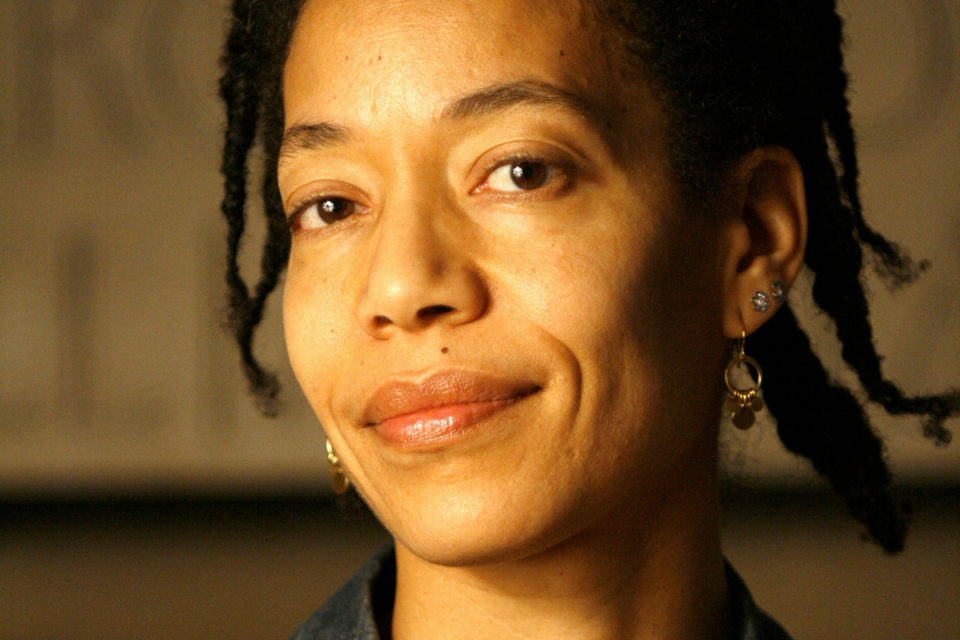There are countless books about Bob Dylan and the Beatles, but the thoroughly white and decidedly male-centric “official” history of rock, as narrated by generations of critics and the selections of the Rock and Roll Hall of Fame, has sizable holes on it.
Maureen Mahon, a cultural anthropologist on the faculty of New York University, has done the work to fill them in with her important new book, Black Diamond Queens: African American Women and Rock and Roll, and she spoke with WNXP’s Jewly Hight about what some of the artists we admire and play have had to push against.
Jewly Hight: How were the innovations and influence of music-making Black women omitted or erased from the narrative of rock music?
Maureen Mahon: I think a number of things happen to make it harder to hear and recognize the contributions of African American women to rock and roll. Part of it is the way the music changed from the period of the 1950s, when African American women were clearly involved in what came to be called rock and roll. They were the original rhythm and blues artists, people like Big Mama Thornton and Ruth Brown and Etta James. But by the 1960s, and especially by the late 1960s, the audience for the music, and more importantly the artists who were creating the music, had shifted and there were a majority. There was just a growing number of white musicians who were involved in the music. And as rock became more important to the identity of young white people, as the name changed from rock and roll to rock, the African American women who were originators of the form started to get written out of the way of the history and were less acknowledged as participants.
JH: How did Big Mama Thornton’s version of the song “Hound Dog,” and her performing style in general, serve as a source for Elvis Presley’s subsequent version? And after his became a ubiquitous rock and roll hit, how did she resist being overshadowed?
MM: “Hound Dog” was a song that was actually written for her. Jerry Leiber and Mike Stoller wrote it for her after they met her and her producer, Johnny Otis said, “You got to write a song. We need a record for this woman.” And so they wrote this blues song where a woman gives a man, a no-good man, a dressing down. And from the very moment she opens with her vocals in the song, you can hear her taking charge of the situation. And she has a really strong, self-possessed attitude …And Elvis Presley was known to be a student of the blues. He was always listening to music by African American artists, and it’s something that he acknowledged early on. …That song was probably a song that he heard her sing on record. And a few years after her version was released in 1953, he covered the song. …It was a really big hit on the three music charts of the day, the R&B chart, which was the Black music chart, the country music chart and also the pop chart. So he crossed over to all of these different audiences. But I think he took a lot of the attitude from Big Mama Thornton and incorporated that into his version of the song and to other performances that he did. Big Mama Thornton, was probably very frustrated that this song had been appropriated from her, and she was not the songwriter, so she didn’t make money from songwriting royalties. What she would do is she always sang the song in concert. It was one of her best known songs. And she would always mention that she was the one who sang the song first. Sometimes she would sing that as an introduction. Sometimes she would state that. But she would always contextualize the song, reminding everyone that that song had been taken from her and that in singing it in concert, she wanted to remind people she wanted to take the song back as hers.
JH: After Patti LaBelle & the Bluebelles enjoyed initial success as a girl group on the R&B circuit, how did they transform themselves and chart a path into rock?
MM: As Pattie LaBelle and the Bluebelles, they were a fairly conventional girl group in terms of their format and the kinds of things they sang about. They happened to have terrific voices, but it was very typical of the girl group sound. But by the end of the ’60s, that sound was no longer in fashion. And they realized that if they were going to survive as performers, they needed to do something different. They needed to make some changes. …And they were really tapping into a lot of the things that had been presented and created in the counterculture, in the rock counterculture. They tapped into that, but from an African American woman’s perspective, and they went in a direction that no one had ever seen, African American women moving before.
Tina Turner is the most well-known artist that you address in your book, and you reframe her trajectory in a way that helps us see it differently and better recognize her artistic agency. After white, British, male rock performers initially borrowed moves from her, how did she turn that exchange around in order to establish the kind of solo career she wanted to have?
MM: There is an interesting back and forth between Tina Turner and the sort of classic rockers from England that starts in the mid-1960s, when those artists, people like members of the Rolling Stones or Rod Stewart or David Bowie were listening to Ike and Tina Turner Records and listening to her vocals as a way to understand how to sing. …In the late 1960s, she hits upon the idea of starting to cover rock songs, very successful rock songs, by white rock artists. The Ike and Tina Turner Revue had always done covers, and she just she suggested to Ike that they start covering songs by the Beatles, the Rolling Stones, Led Zeppelin, and they did that as a way to expand their audience and to better connect with the white rock audience that they were starting to get access to. …So she was always making some forays into into rock. And then once she left Ike in the mid-’70s and starting to develop a solo career, she says very emphatically that she doesn’t want to stay in rhythm and blues, because it is economically marginal compared to the rock category. …The result of that was the album Private Dancer, which was an enormous commercial success and also an enormous critical success. And it launched her into being the first African American woman stadium rock star.
JH: You offer Santigold as an illuminating contemporary example of a Black woman artist whose stylistic leanings have been misidentified. What struck you about the friction between her rock affinities and abilities and the way her music was received and categorized?
MM: one thing about Santi White, who started performing as a Santigold, is that I was familiar with her from an earlier band called Stiffed, which was very clearly defined rock band, punk band, and she was very immersed in a punk esthetic. So when she became Santigold, I was interested in how she her sound had shifted. And then also as I followed her, it was interesting to see her responses to the language that was used to describe her music. She was really resistant to the terminology rhythm and blues or R&B, because she as she said in one of the quotes that I used, “I really don’t have an affinity for that music. But people keep putting me in that category not because of the way my music sounds, but because of who I am as a Black woman.” And so I thought that was a really good example of the way musical sound matters, but maybe not as much as the person’s identity. That was an issue that followed the women that I write about in the book, because in many cases they’re trying to work in the field of rock and roll or the field of rock, but there’s an assumption that that isn’t something that Black women should do or that people would be interested in hearing Black women do.
JH: In your epilogue, you place Brittany Howard in the lineage of music-making Black women who didn’t allow themselves to be hemmed in by the genre boundaries drawn along lines of race and gender. How do you see her demonstrating that in choices she makes about instrumentation and playing style, her vocal approach, how she presents herself or anything else?
MM: Brittany Howard has really stepped out and said, “I’m going to do my thing. And if you’re not interested, you can go about your business. But this is what I’m going to do.” …What appealed to me so much in the [Alabama Shakes’] sound was the fact that there was this distorted guitar sound and that she was one of the people who was making that sound, along with the kind of experimental things and really interesting choices that she was making with her vocals. And so I think all of these things made her fit into the world of rock and roll. And then she herself has spoken about the way someone like Tina Turner was a model for her vocally, as someone who is a woman who sang without worrying about sounding pretty.

